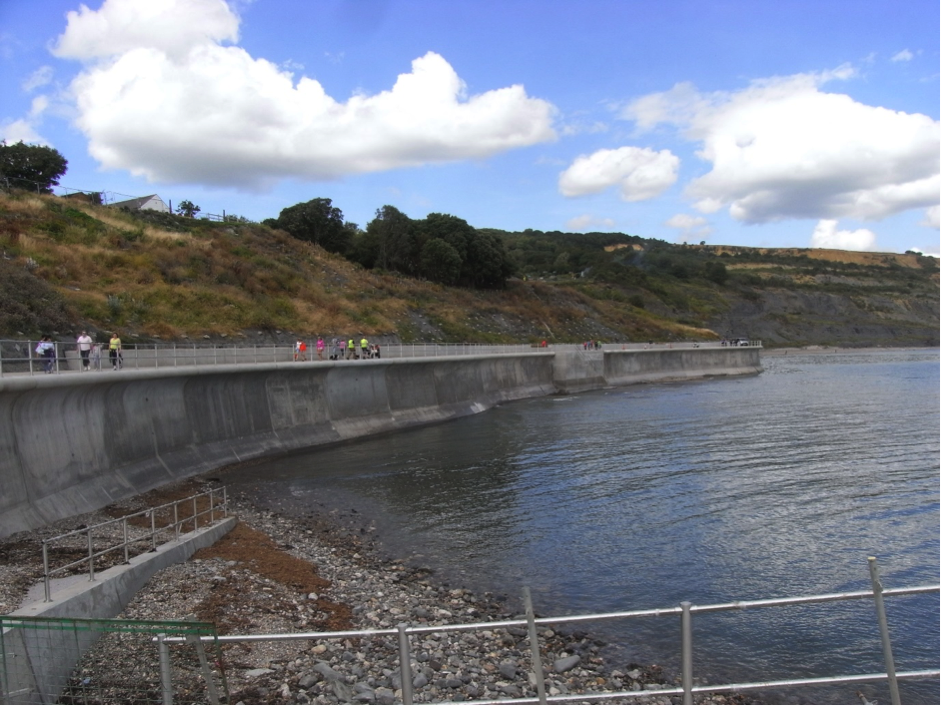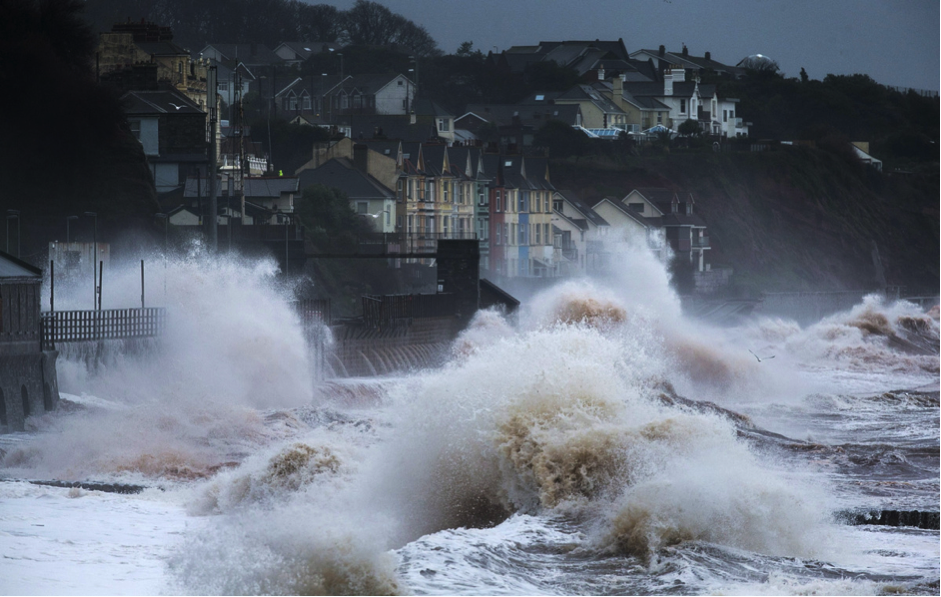Are seawalls the magic solution to coastal flooding and erosion?
By Shari L. Gallop, Macquarie University
History of seawalls
Seawalls are a form of coastal defence, where a wall is built parallel to the coast to protect land and infrastructure from coastal flooding, and erosion due to wave action. They may also be built to help stabilise a cliff or a bank, and can be made from a variety of materials, such as timber, concrete, rocks, and steel sheet piling.
 Seawall at Lyme Regis, UK (Source: http://www.lymeregissociety.org.uk/2014/08/the-new-sea-wall-is-open/).
Seawall at Lyme Regis, UK (Source: http://www.lymeregissociety.org.uk/2014/08/the-new-sea-wall-is-open/).
Seawalls have been used for coastal defence for thousands of years. The earliest seawalls were built in Byzantium (later called Constantinople, then Istanbul) in around 195 AD. This was largely to protect the city against attacks from intruders rather than from coastal flooding and erosion. Parts of this seawall still remain today. Historic seawalls can still provide coastal protection even today. For example, at the former French colony of Pondicherry in India, the 220 year old seawall protected the historic centre during the Indian Ocean tsunami on December 26, 2004. Today, many countries (including the UK) have a long history of using seawalls and they are one of the most widely used coastal defence strategies.

Dawlish seawall and railway line being destroyed by a storm in February 2014 (Source: http://www.huffingtonpost.co.uk/2014/02/06/dawlish-railway-line_n_4735823.html)
Problems with seawalls
Seawalls are mainstream and are relatively socially acceptable. In particular, when there is sudden and severe coastal erosion, often a seawall is called for as the “only solution”. Implementation of seawalls is often used in combination with beach renourishment, where sediment is artificially moved onto the beachface from local or other sources. However, while seawalls may well be the most appropriate remedy in some situations, it is important to remember the potential problems:
- Seawalls are expensive to design and construct. And who pays? Landowners? Councils?
- Seawalls interrupt natural sediment transport: Such as by stopping sediment from cliff erosion nourishing a beach, reflecting waves, or blocking movement of sediment alongshore. In this way, seawalls can increase erosion in surrounding areas. When we intervene using coastal engineering solutions, sometimes all we do is shift the problem further alongshore.
- Seawalls can reduce beach amenity by leading to a narrowed beach area, to the point where we lose the beach entirely, and can be perceived as unsightly.
- Seawalls can destroy natural habitats such as intertidal beaches and dune systems.
- With sea level rise, many seawalls are now not high enough and need to be raised. Again, who pays?
So while seawalls have their place, they are not the only form of coastal protection, and we need to remember that they are not a magic solution without consequences.
References
Anand, K.V.; Sunday, V., and Sannasiraj, S.A., 2011. Hydrodynamic characteristics of curved front seawall models compared with vertical seawall under regular waves. Journal of Coastal Research, 27(6), 1103–1112.
Bardill, J., 2004. Brickstamps of Constantinople, Volume I: Text, Oxford University Press.
Mango, C., 2001. “The shoreline of Constantinople in the fourth century”, in Necipoğlu, Nevra, Byzantine Constantinople: Monuments, Topography and Everyday Life, Istanbul: BRILL, pp. 19–28.
Allsop, N.W.H., 2002. Breakwaters, coastal structures and coastlines. Thomas Telford.
